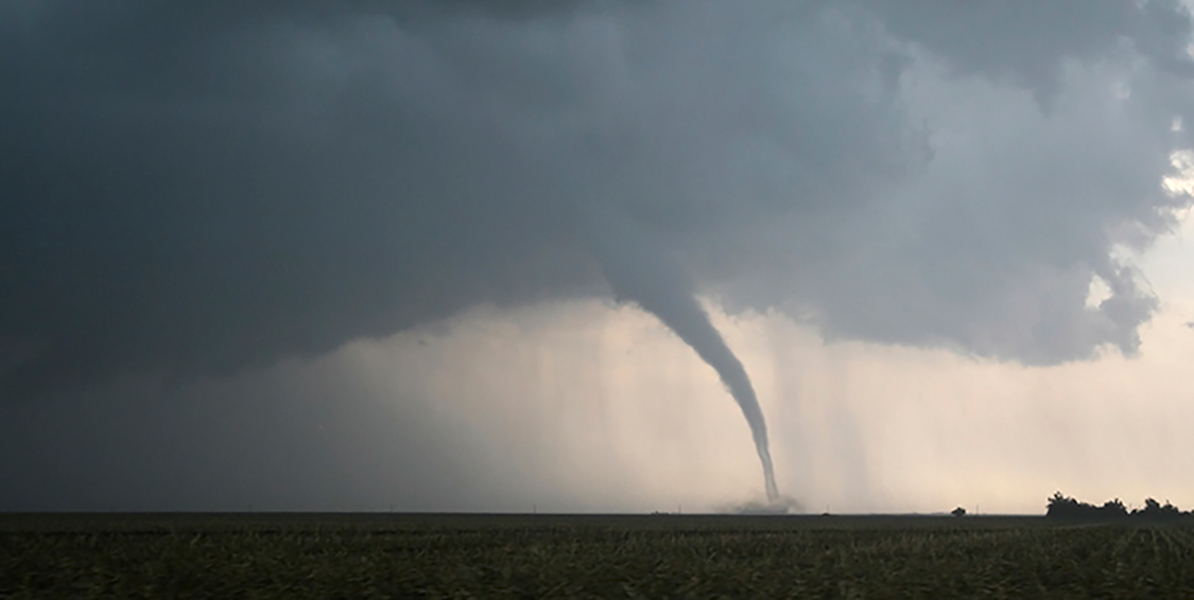Source: Michigan Committee for Severe Weather Awareness
Ever wonder just what makes a tornado a tornado? Here’s a handy FAQ on thunderstorms and tornadoes, with information on watches and warnings, and how to get weather information.
1. What is a severe thunderstorm?
A severe thunderstorm produces large hail that is one inch in diameter or larger, damaging winds of 58 mph or greater, and/or a tornado.
2. What is a tornado?
A tornado is a column of violently rotating winds extending down from a thunderstorm cloud and touching the surface of the earth.
3. What is the difference between a tornado and a funnel cloud?
A funnel cloud is also a column of violently rotating winds extending down from a thunderstorm; however, it does not touch the earth as a tornado does.
4. When do tornadoes generally occur?
Most tornadoes occur during the months of May, June, July and August primarily in the late afternoon and evening hours. However, tornadoes can occur any time of the day or night in almost any month during the year.
5. How fast do tornadoes travel?
Tornadoes generally travel from the southwest at an average speed of 30 mph. However, some tornadoes have very erratic paths, with speeds approaching 70 mph.
6. How far do tornadoes travel once they touch the ground?
Many tornadoes are on the ground for less than 10 minutes and travel a distance of about five miles. However, they do not always follow the norm and have been known to stay on the ground for more than an hour and travel more than 100 miles.
7. When is a tornado or severe thunderstorm watch issued?
A tornado or severe thunderstorm watch is issued whenever conditions exist for severe weather to develop. Watches are usually for large areas and are usually two to six hours long. Watches give you time to plan and prepare.
8. When is a tornado or severe thunderstorm warning issued?
The local National Weather Service (NWS) office issues a tornado warning whenever NWS Doppler Radar indicates a thunderstorm is capable of producing a tornado or when a tornado has been sighted by a credible source. A severe thunderstorm warning is issued whenever a severe thunderstorm is observed or NWS Doppler Radar indicates a thunderstorm is capable of producing damaging winds or large hail.
Warnings are issued for even smaller areas, such as parts of counties. These “storm-based” NWS warnings are issued for the threatened area in a shape of a polygon. The “polygon” warnings only include sections of a county or group of counties and usually last for 30 to 90 minutes in length. You must act immediately when you first hear the warning. If severe weather is near you, seek shelter immediately. If not, keep a constant lookout for severe weather and stay near a shelter.
9. What is a special marine warning?
The NWS will issue a special marine warning for the Great Lakes and the connecting waterways when a strong or severe thunderstorm develops or moves over the water. The special marine warning is issued for boaters, both recreational and commercial. For residents and visitors of coastal communities, the special marine warning provides valuable information about a storm that is about to move onshore.
10. How do I find out about a warning if my electricity is already out?
A NOAA Weather Radio All Hazards with battery back-up capability is your best source to receive the warning. In some areas, civil emergency sirens may be your first official warning. In addition, if your television or radio has battery back-up capability, you may receive NOAA’s National Weather Service warnings from local media.
